Click Below to Skip Ahead
The Weston hybrid dog breed is a cross between the Coton de Tulear and the Westie which has resulted in a small growing dog with admirable characteristics. Weston’s are lithe and slender, with a long coat that gives them a fluffy appearance. This dog breed was first bred in Scotland as vermin control. They have a gentle temper and are known for their non-aggressive disposition which makes them excellent family dogs. The Weston is considering a patient lap dog that is willing to cuddle with you and receive human interaction. Although they are small dogs, they have an active personality and are guaranteed to be a great addition to both an active family, and a family who wants a low-maintenance dog that is great with kids. The Weston is also hypoallergenic and suited for families who have minor allergic responses to shedding dog breeds.
Breed Overview
Height:
10-12 inches
Weight:
12-17 pounds
Lifespan:
12-15 years
Colors:
Cream, brown, & black
Suitable for:
Families with children looking for an active yet calm lapdog
Temperament:
Loyal, loving, energetic, and eager to please

Weston Puppies
Since the Weston is not a common dog breed, puppies from a breeder will be on the higher side. Breeders charge more for their puppies because they are considered to be of higher quality. Shelters and rescue centers are likely to charge less.
Families with children will be happy with this friendly and eager to please dog.
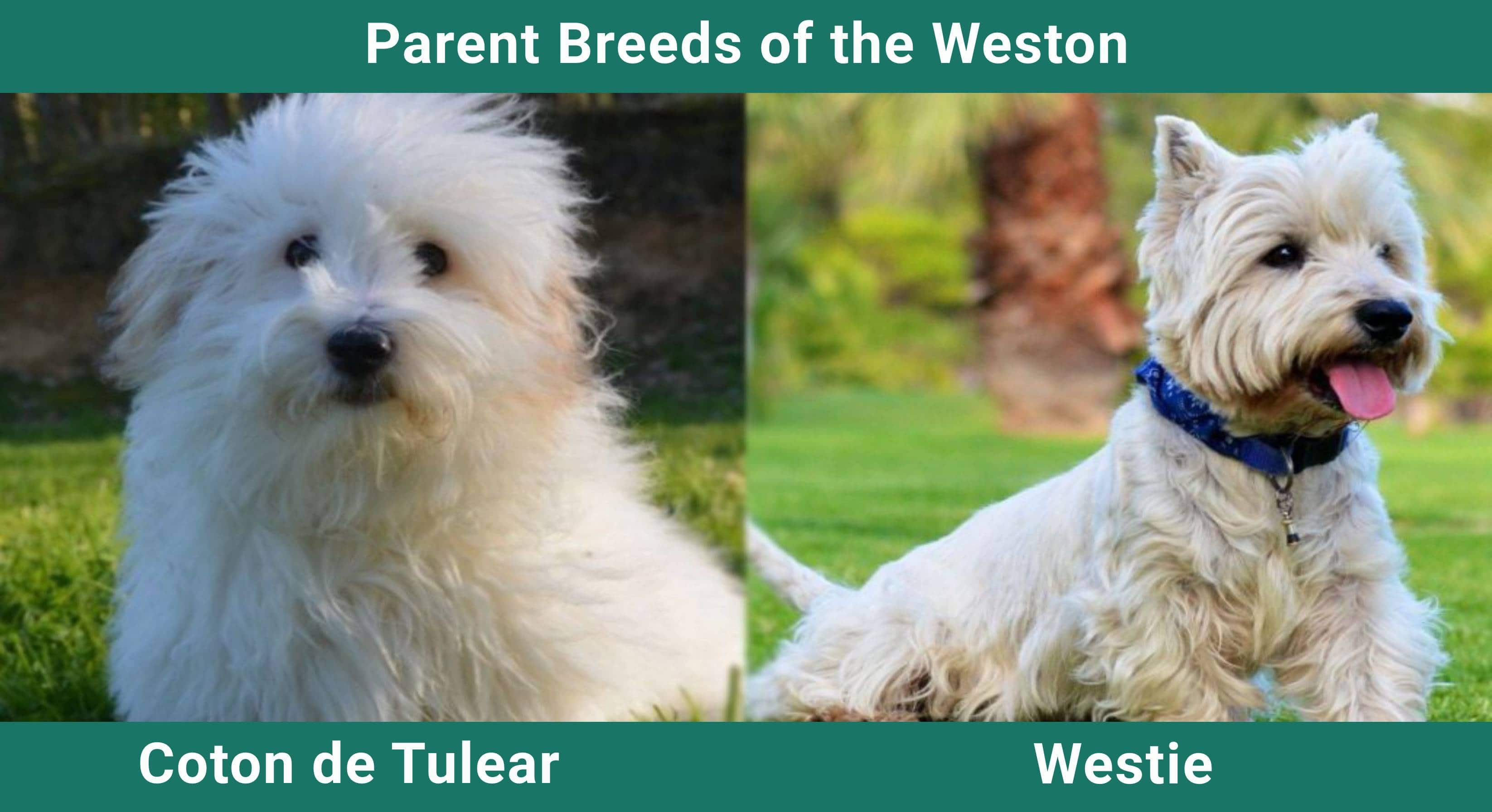
Temperament & Intelligence of the Weston
Are These Dogs Good for Families?
Weston’s make great family dogs. They are affectionate and eager to please their owners. It should be noted that this dog breed can get snappy if they feel irritated, perhaps if a small child keeps on bothering them. With that aside, they still make good dogs for families with children in the home, as long as the children know how to safely handle and behave a dog in its presence.
Does This Breed Get Along with Other Pets?
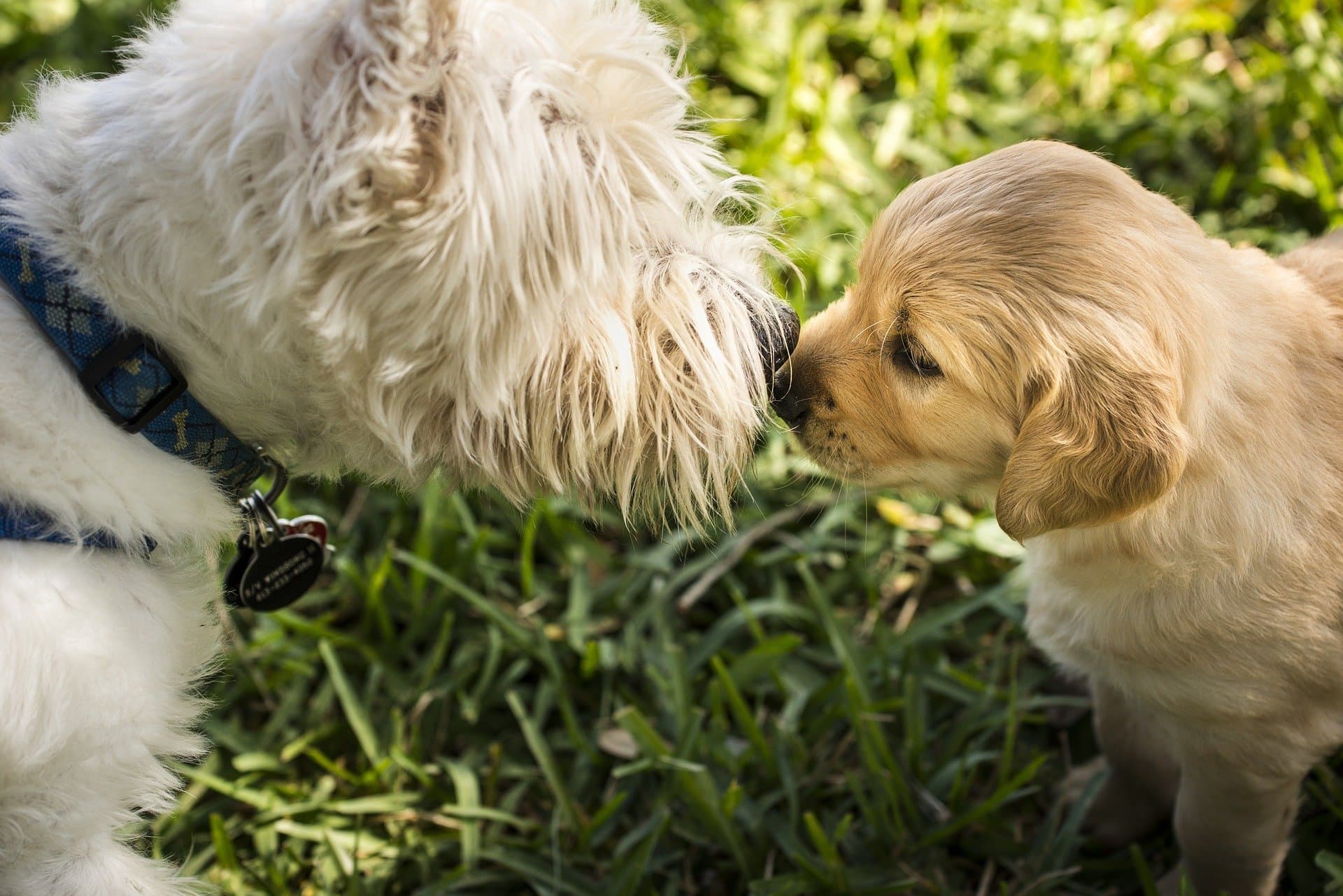
Since the Weston was originally bred for vermin control, they do not typically get along with caged pets. This includes rats, mice, hamsters, guinea pigs, rabbits, and birds. They do get along with other dogs and some cats if these other pets are calm and will not interfere with the Weston who enjoys peace and privacy in the household. They will also enjoy having a smaller dog in the home that is of a similar size to play with. The Weston get less active as they age, and they will not appreciate a boisterous puppy when they reach their senior years.
 Things to Know When Owning a Weston:
Things to Know When Owning a Weston:
Food & Diet Requirements
The Weston dog breed should be fed a diet high in protein as a puppy and into adulthood. This ensures that they receive enough nutrition to grow and develop properly from an early age. The ingredients should be high-quality and as organic as possible. Amino acids, fish oils, and vitamin E should be included to ensure that their coat remains shiny and healthy in appearance.
Amino acids are essential for the vitality of dogs and should be high on the ingredients list. The amount of food your Weston dog eats depends on their age and energy levels. A puppy will eat a slightly different diet than an adult, in terms of nutrition and portion size. An adult Weston dog should be fed half a cup of dry food a day split into two meals, ideally in the morning and evening.
Exercise
Weston’s can be energetic during their puppy years and early adulthood. Your Westie will enjoy going on walks with their owner a few times a week, typically within 30 to an hour-long walk if there is an opportunity for your Weston to rest in the shade and drink fresh water every few minutes.
This dog breed does not need a household with a large yard, but they will enjoy running around the garden and playing fetch, or even tug of war with their owner and playing with various toys. It is also possible to take your westie for a play in a local secured dog park where there is more space for your westie to engage in various activities to get rid of some pent-up energy.
Your Weston does not require daily exercise, but it is recommended to allow them to get exercise every second day when they are young, and every 4 to 5 days as they get older. The exercise routine will have to be adjusted as they age because westies get lazier as they age, and some senior Weston dog health conditions can reduce their effectiveness at exercising. They are not as active in comparison to other large or medium dog breeds and will typically spend more time relaxing than they will be exercising.
Training
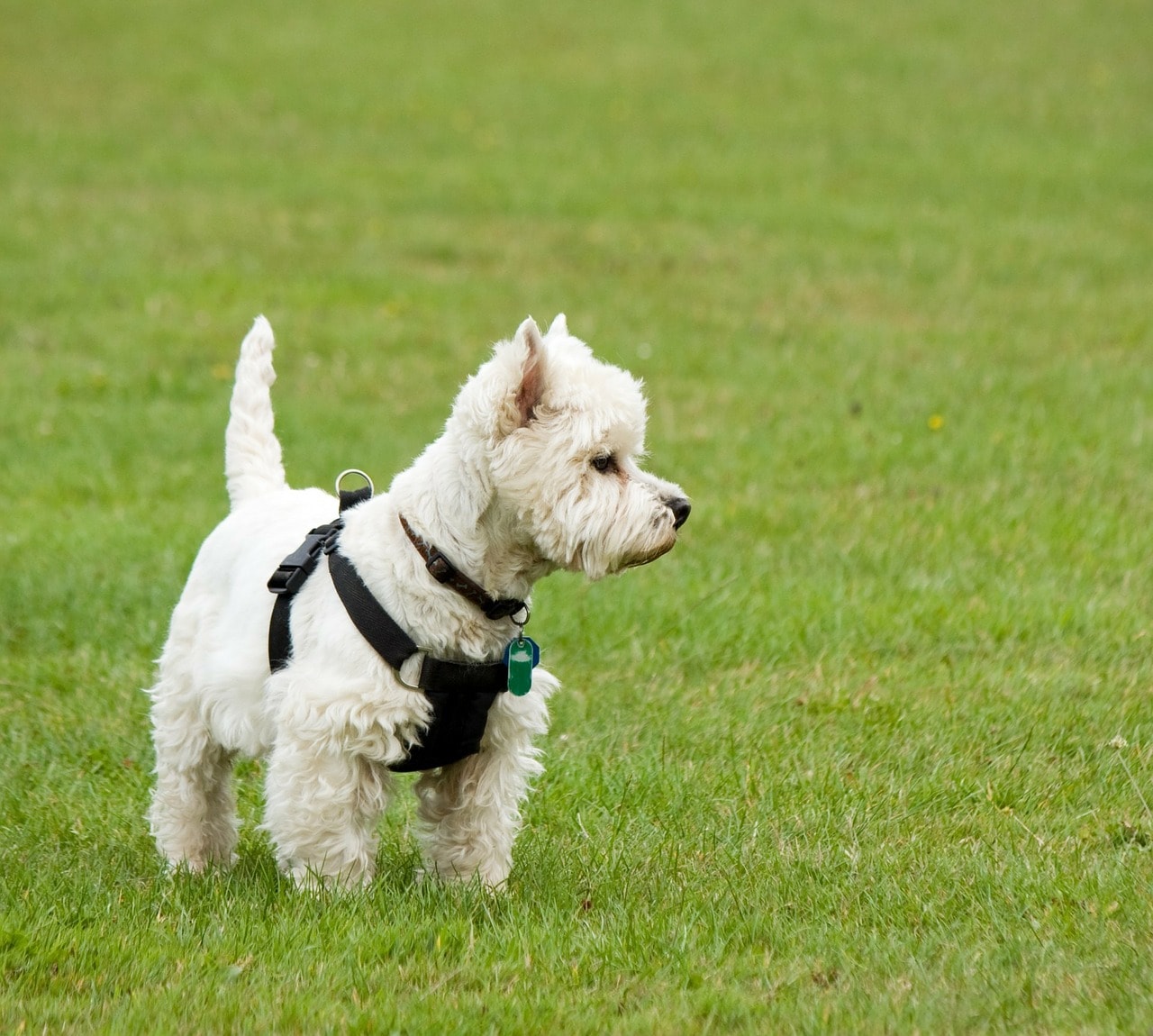
Weston’s can be taught basic tricks and tasks and their intelligence allows them to remember which behaviors and tasks they get rewarded for and they will carry on doing it. Some standard tricks include teaching them how to sit, stay, roll over, fetch a ball, or lie down. This should be taught to them from a young age so that they can pick up the habit from a young age.
Many Westie owners rave about crate training, which is when you place your Weston in a large dog crate with food and water, a soft blanket, and a pillow. Crate training can be useful when you go out for a short period and do not want your untrained westie to get into places he shouldn’t or leave accidents around the house. Your dog should not be kept in a crate often, but it is a good alternative to leaving them outside or locked in a room when you go out. Once your Weston has been trained, then he will no longer need the crate but may use it as a place to sleep when the doors are left open.
Weston puppies are known to leave accidents around the house and need to be trained to use a puppy pad inside of the house, and an area in the yard to do their business. This can be done by positive reinforcement when you give them a healthy treat for doing their business correctly. It may take a few weeks or months to successfully litter train them, but they will get used to it and understand that they should not leave any accidents around the house.
Avoid punishing your Westie if they do not do a trick or task right, rather seek the help of a canine behaviorist if you are concerned and want to know what steps to take further in training your westie.
Grooming ✂️
This dog breed has a thick double coat that curls in some sections. The undercoat is short, and the topcoat is close to 2 inches in length. Westies should not be shaved as the topcoat protects them from weather conditions and aids in temperature control. The coat is easy to maintain, and regular trimming and grooming are required monthly to keep the coat in good condition.
Since the most common coloration of the Weston dog breed is cream or white, they may show dirt more easily and washed with safe dog shampoo and conditioner can be used to wash them every few months. Your westie should also be taken to a vet or grooming parlor to have their nails trimmed before they can reach an uncomfortable length. Westies also commonly get weepy eyes that can cause the surrounding fur to be stuck with gunk and turn brown. A pet eye wipe can be used to wipe the excess gunk off the eye fur to keep your westies vision clear.
Health and Conditions
- Hip dysplasia
- Allergies
- Cataracts
- Westie lung disease
- Eye problems
- Legg-calve Perthes disease
- Patellar luxation
- Cancer
- Craniomandibular osteopathy
- Lung problems
- Osteopathy
Male vs Female
Male Weston dogs are taller and sleeker than females, with elongated necks and long legs. Males typically have a shorter coat with less curling. They also seem to have lower energy levels in comparison to female westies, and they are also known to bark less and enjoy cuddles and human interaction more.
The female westie is more independent and stockier than males. They weigh more even though they have a smaller stature and shorter legs. The most prominent feature of a female Weston dog is the pink and brown pigmentation on their stomach area near their genitals. The female’s stomach is rounded which can give them a barrel appearance. The coat is longer and curls near the face and stomach. Female westies are also more energetic and bark out of curiosity and playfulness more often.
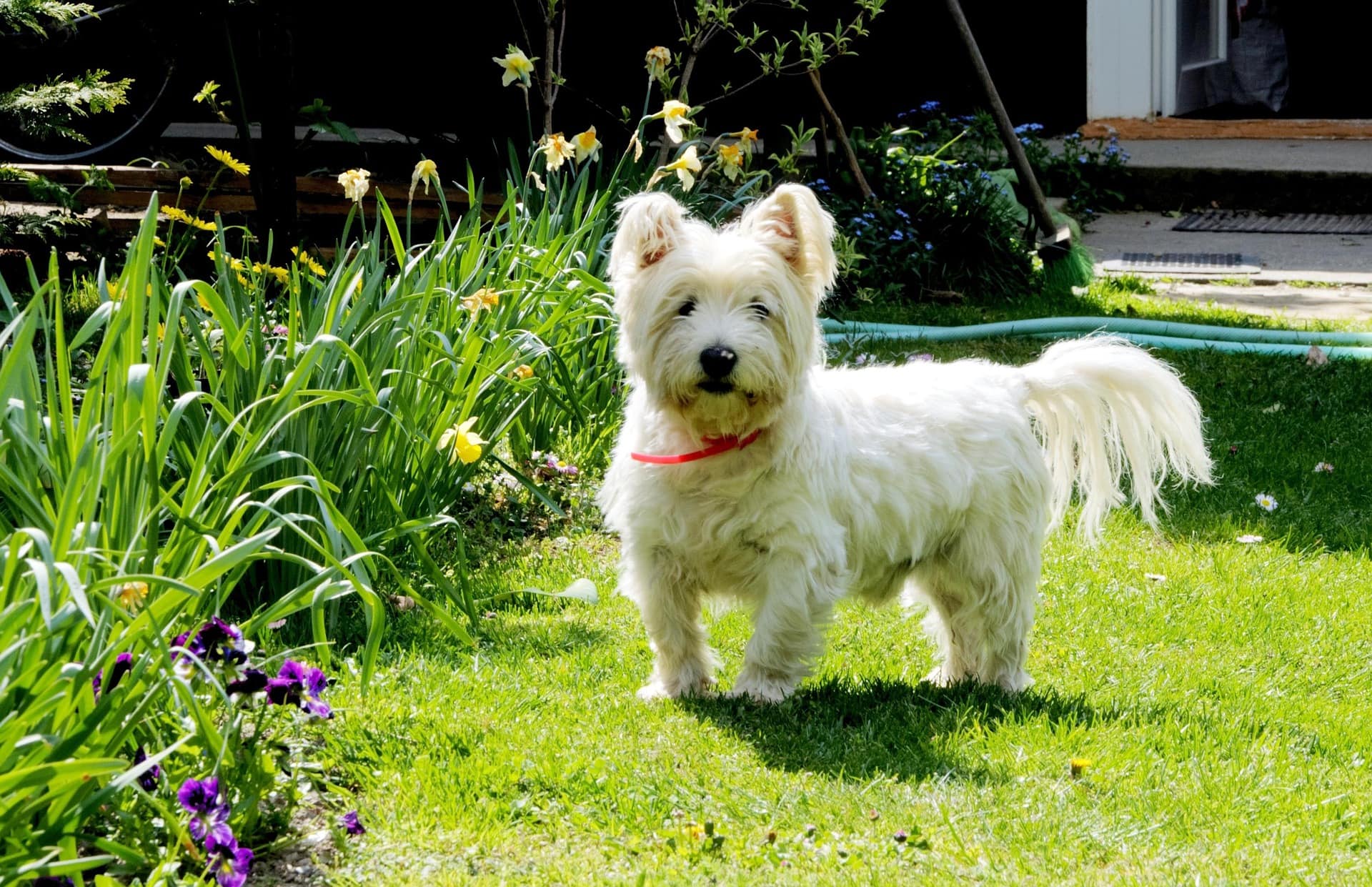
 3 Little-Known Facts About the Weston
3 Little-Known Facts About the Weston
1. The Weston is not a purebred dog as many people believe, they are a mixed breed and are considered to be designers.
2. Weston’s make the perfect lapdog, yet they are energetic enough to enjoy long walks and hours of playtime.
3. The Weston has a long lifespan between 12 to 15 years.
 In Conclusion
In Conclusion
Overall, the Weston dog breed makes an excellent family dog. They are great with children and multi-dog households and their fur is less likely to bother family members who suffer from allergies. Keep in mind that this small dog breed lives longer than other breeds of dog and can be a longer commitment.
It is best to check out local rescues and shelters in your area to see if there are any westies up for adoption before you look for one from a breeder. Even though this is a rare type of dog, you will be surprised at the variety adoption centers have to offer in terms of dog breeds of all ages and colors.
See also:
- Weeranian (Westie & Pomeranian Mix): Care, Pictures, Info & More
- Scoland Terrier (Westie & Scottie Mix): Care, Pictures, Info & More
Featured Image Credit: Pixabay

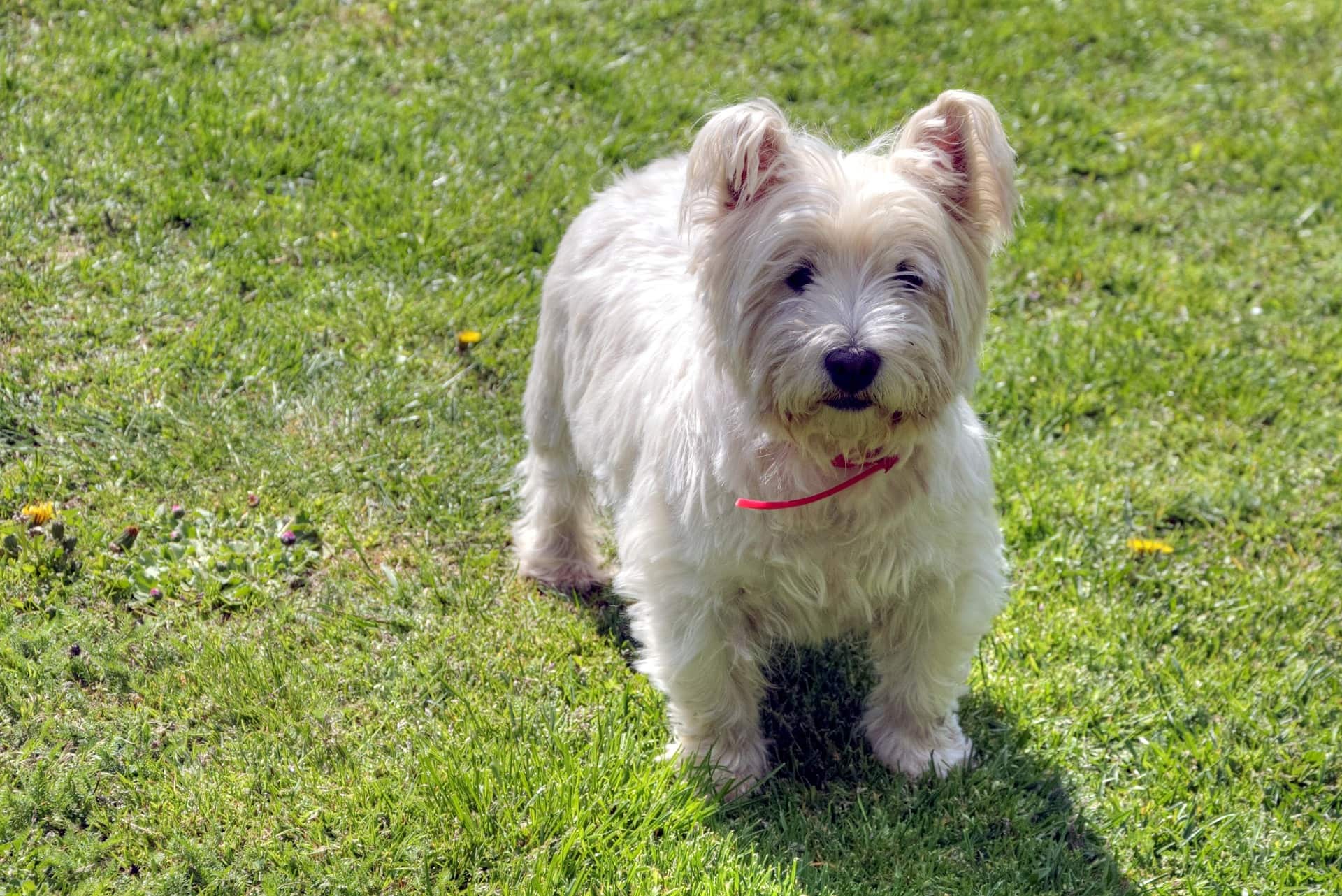

 Things to Know When Owning a Weston:
Things to Know When Owning a Weston: 3 Little-Known Facts About the Weston
3 Little-Known Facts About the Weston In Conclusion
In Conclusion







